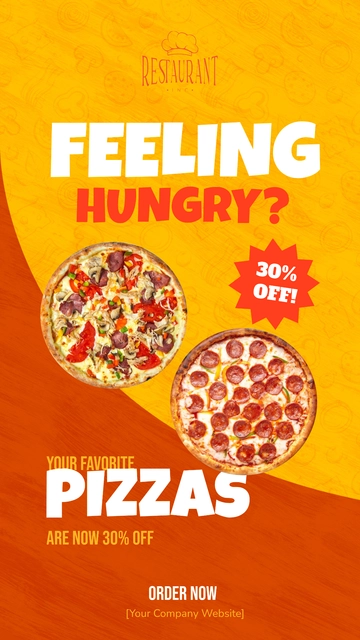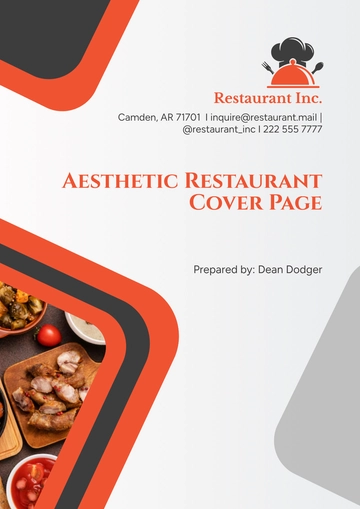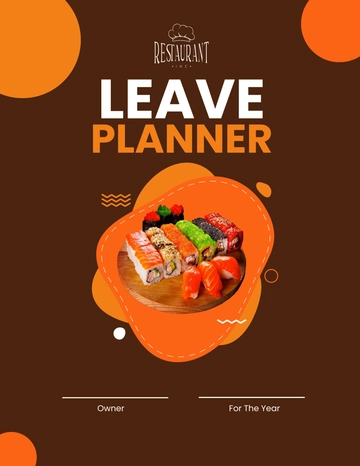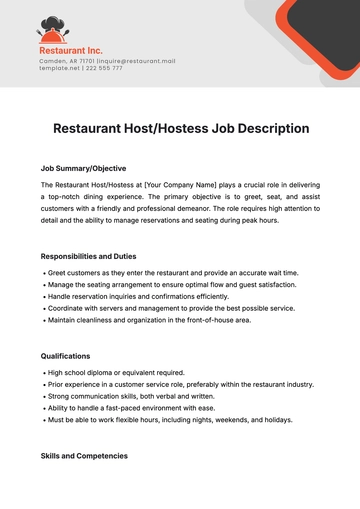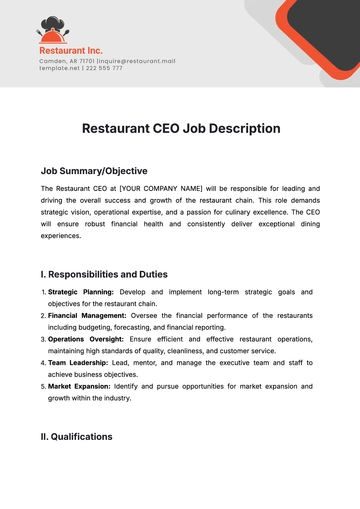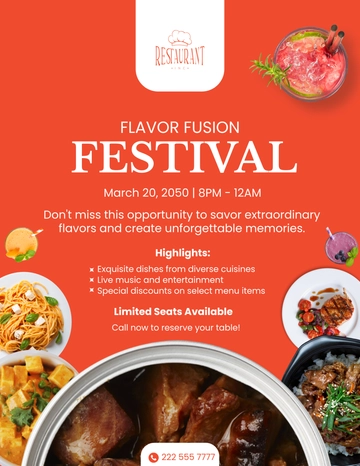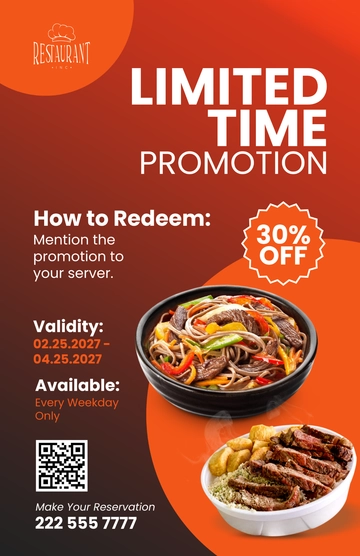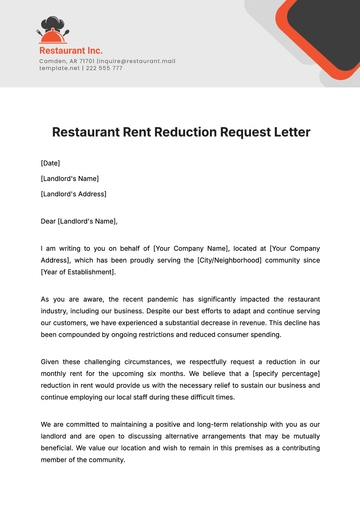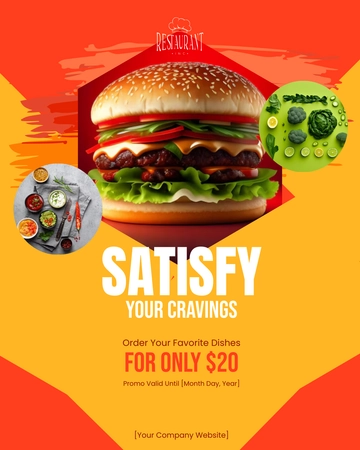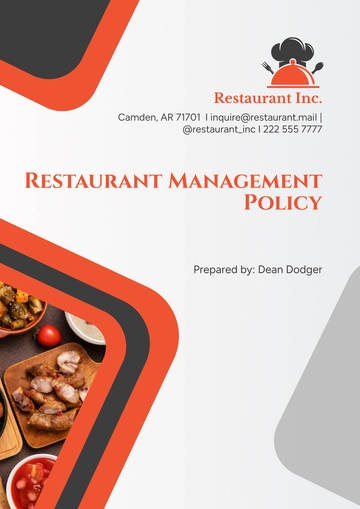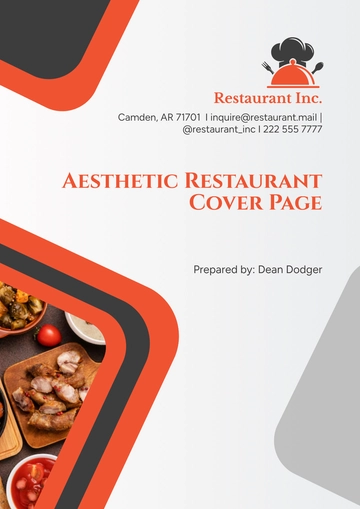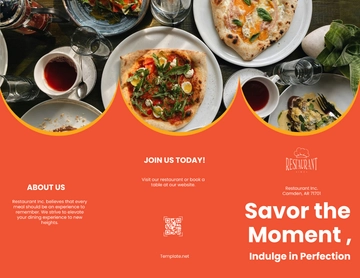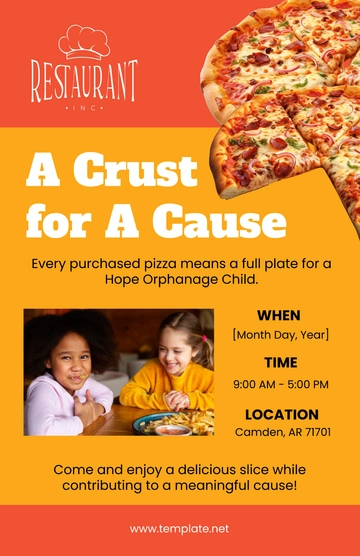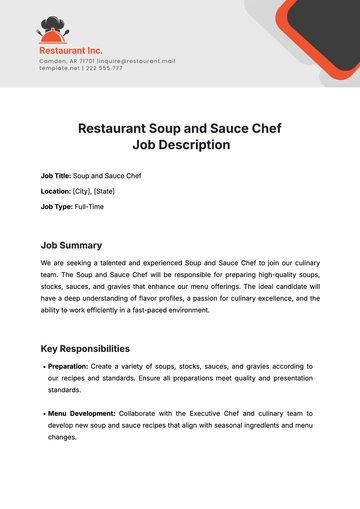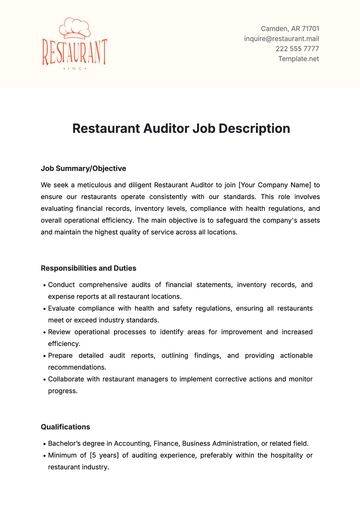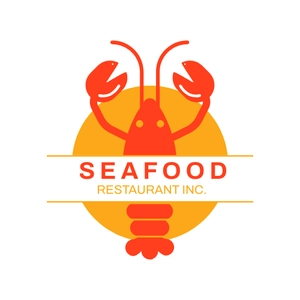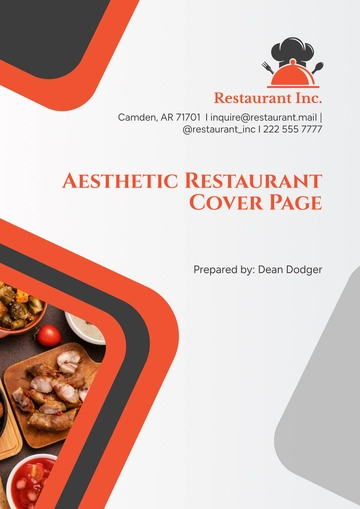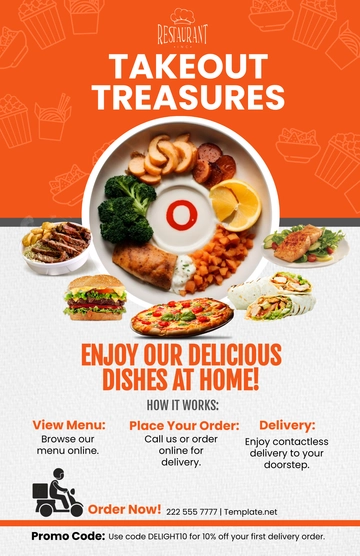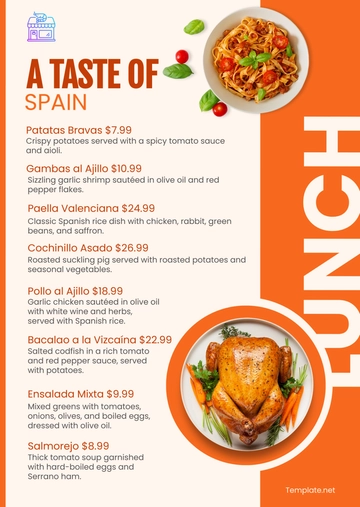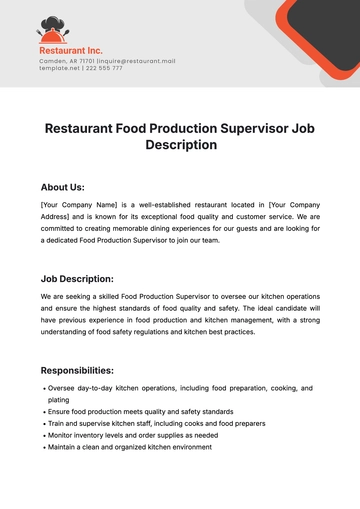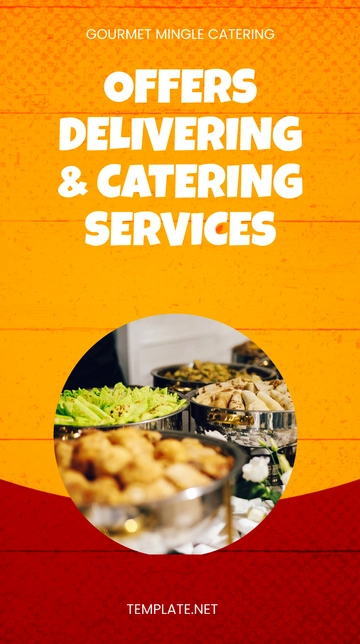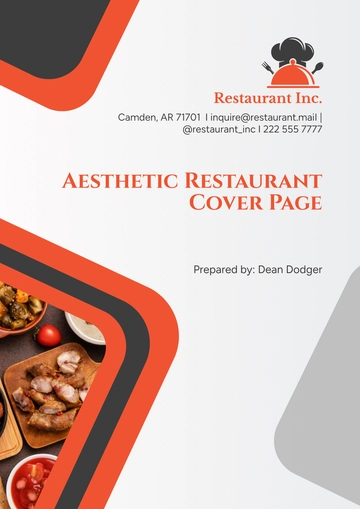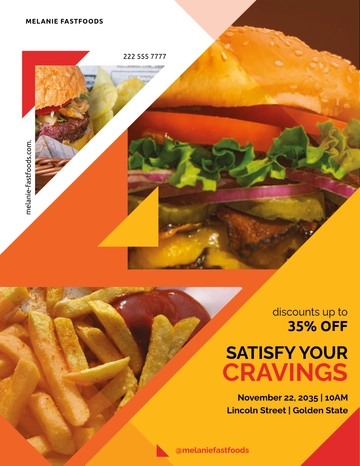Free Restaurant Marketing Guide
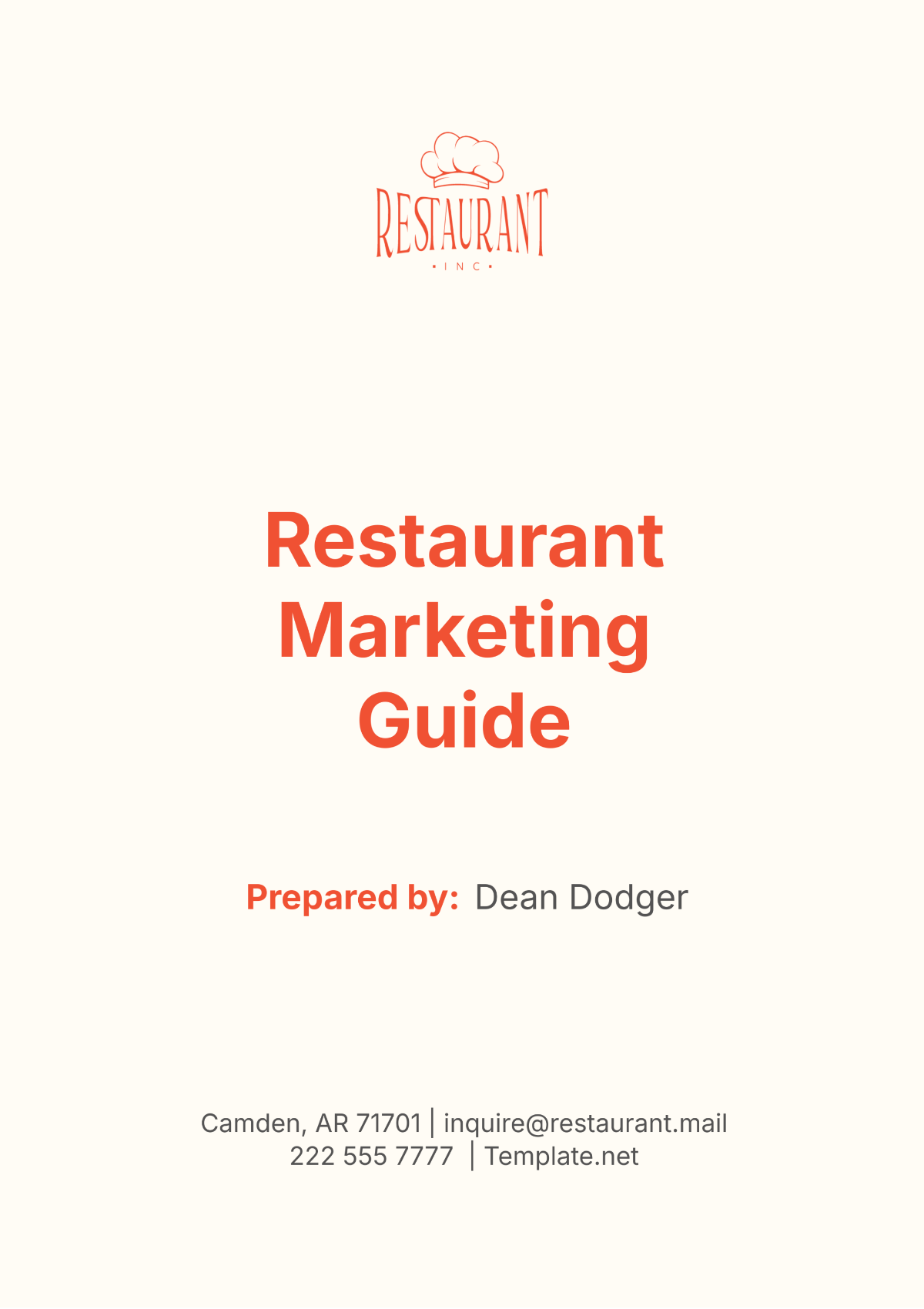
Introduction
Welcome to [Your Company Name]'s Restaurant Marketing Guide. This document is designed to provide a comprehensive overview of our marketing strategies, objectives, and practices. In a highly competitive industry, effective marketing is essential to attract and retain customers, enhance brand recognition, and drive business growth. This guide will outline our approach to understanding our target audience, analyzing competitors, crafting key messages, and implementing promotional strategies. By adhering to the guidelines in this document, [Your Company Name] aims to build a strong, reputable brand and create memorable dining experiences for our customers.
Effective Date: January 1, 2050
1. Target Audience
Understanding our target audience is crucial for crafting effective marketing messages. Our primary customers include food enthusiasts, families, and professionals looking for dining experiences that combine quality, value, and atmosphere. Additionally, we aim to attract tourists seeking authentic local cuisine.
Demographic Profile
Age Range: 25 to 55 years old
Income Level: Middle to high income
Lifestyle: Regular dining out, seeking quality dining experiences
Technology Use: Digital-savvy, frequent social media users, rely on online reviews
Psychographic Profile
Interests: Culinary experiences, social dining, cultural exploration
Behavior Patterns: Frequent use of social media, preference for recommendations and reviews, value high-quality service and ambiance
By understanding these demographic and psychographic profiles, [Your Company Name] can tailor its marketing strategies to resonate with the target audience, ensuring that our messaging aligns with their preferences and behaviors.
2. Competitive Analysis
To gain a competitive edge, we must analyze other restaurants in our area thoroughly. This includes understanding their strengths, weaknesses, pricing strategies, and customer satisfaction levels. By doing so, we pinpoint opportunities where we can outperform them.
A. Restaurant A
Strengths: High-quality food, strong local reputation
Weaknesses: Limited menu, higher prices
Customer Satisfaction: 4.5 stars on average
Pricing Strategy: Premium pricing
B. Restaurant B
Strengths: Diverse menu, frequent promotions
Weaknesses: Inconsistent service quality
Customer Satisfaction: 4.0 stars on average
Pricing Strategy: Mid-range pricing with frequent discounts
C. Restaurant C
Strengths: Excellent customer service, cozy ambiance
Weaknesses: Limited online presence
Customer Satisfaction: 4.2 stars on average
Pricing Strategy: Mid to high range
Market Opportunities
Unique Selling Proposition (USP): Highlighting our unique menu items and exceptional dining experience
Service Enhancements: Focusing on consistent high-quality service
Digital Presence: Strengthening our online presence through SEO and social media engagement
Community Engagement: Increasing involvement in local events and partnerships
Regularly reviewing competitors' marketing efforts, menus, and promotions helps us remain proactive. We also consider indirect competitors like meal delivery services and home-cooked meal kits that can influence our potential customers' dining decisions.
3. Key Messages
Our key messages revolve around the quality of our food, exceptional customer service, and the unique ambiance of our restaurant. These themes should be consistently communicated across all marketing platforms to build a strong and recognizable brand identity.
Core Messaging Themes
Quality of Food: "Experience culinary excellence with every bite."
Customer Service: "Exceptional service that makes every visit memorable."
Ambiance: "A unique dining atmosphere that feels like home."
Storytelling Approach
Engaging storytelling is essential in conveying these messages. Whether through social media posts, newsletters, or in-restaurant materials, we aim to create an emotional connection with our audience that fosters loyalty and advocacy. Stories about the origins of our dishes, behind-the-scenes looks at our kitchen, and profiles of our staff can humanize our brand and deepen customer engagement.
4. Branding Guidelines
Consistency in branding is vital for credibility and effective marketing. Our logo, color schemes, typography, and imagery should remain uniform across all promotional materials. This ensures that our brand is easily recognizable and memorable.
Visual Identity
Logo Usage: Consistent placement and sizing in all materials
Color Scheme: Primary colors should be used across all platforms, with secondary colors for accents
Typography: Use designated fonts for all written communication
Brand Voice
Our brand's voice should reflect our restaurant's personality—friendly, inviting, and passionate about food. Maintaining a coherent tone and style across all communications further strengthens our brand identity.
Sample Branding Elements
Element | Specification |
|---|---|
Primary Colors | #FF6347 (Tomato Red), #FFD700 (Gold) |
Secondary Colors | #FFFFFF (White), #000000 (Black) |
Fonts | Primary: Helvetica, Secondary: Arial |
Logo Placement | Top left on print, center on digital |
5. Promotional Strategies
We employ a variety of promotional strategies to reach our target audience effectively. These include social media marketing, email campaigns, influencer partnerships, and special events like food festivals or themed nights. Each channel is chosen for its ability to reach specific audience segments and fulfill different marketing objectives.
Social Media Marketing
Platforms: Instagram, Facebook, Twitter, LinkedIn
Content Types: High-quality images, engaging videos, customer testimonials, promotional posts
Frequency: Daily posts, weekly campaigns
Email Marketing
Campaign Types: Newsletters, special offers, event announcements
Targeting: Personalized emails based on customer preferences and behavior
Frequency: Bi-weekly newsletters, occasional special campaigns
Influencer Partnerships
Strategy: Collaborate with local food bloggers and social media influencers
Goals: Increase brand awareness, attract new customers, generate authentic content
Approach: Host influencer events, provide exclusive offers
Events and Promotions
Types: Themed nights, holiday specials, loyalty programs, community events
Goals: Drive foot traffic, enhance customer engagement, build community relations
Execution: Plan and promote events through all marketing channels
6. Budget Allocation
Allocating the budget wisely ensures the effectiveness and sustainability of our marketing efforts. A portion of our budget is dedicated to digital marketing, given its broad reach and cost-effectiveness. Offline marketing initiatives, such as print ads and community event sponsorships, are also allotted a significant share to diversify our outreach.
Budget Breakdown
Marketing Channel | Percentage of Total Budget |
|---|---|
Digital Marketing | 40% |
Social Media | 20% |
Email Campaigns | 10% |
Influencer Partnerships | 10% |
Traditional Marketing | 20% |
Print Ads | 10% |
Community Sponsorships | 5% |
Events and Promotions | 5% |
Budget Review
Regularly reviewing and adjusting our budget based on the performance of different marketing channels helps to maximize our ROI. Keeping some budget flexible allows us to capitalize on unforeseen opportunities or trends.
7. Success Metrics
Measuring the success of our marketing activities involves tracking various metrics, including customer footfall, online engagement, and sales figures. Customer feedback, both in-person and through review platforms, also provides valuable insights into the effectiveness of our campaigns.
Key Performance Indicators (KPIs)
Metric | Definition | Target |
|---|---|---|
Customer Footfall | Number of customers visiting the restaurant | Increase by 10% quarterly |
Social Media Engagement | Likes, shares, comments on social media posts | Increase by 20% quarterly |
Sales Figures | Revenue generated from marketing campaigns | Increase by 15% annually |
Customer Reviews | Average rating on review platforms | Maintain 4.5 stars or higher |
Continuous Improvement
Regularly reviewing these metrics helps identify areas for improvement and adjust strategies accordingly. This continuous evaluation process ensures that our marketing efforts remain focused, efficient, and aligned with our business goals.
8. Additional Considerations
Staying updated with industry trends is crucial. Attending food and beverage conferences, subscribing to trade publications, and networking within the hospitality industry can offer valuable insights that keep us competitive.
Industry Trends
Emerging Culinary Trends: Keeping up with new food trends and customer preferences
Technology Innovations: Adopting new technologies to enhance customer experience and streamline operations
Sustainability Practices: Incorporating eco-friendly practices into our operations and marketing
Employee Training
Employee training in customer service and brand representation plays a significant role in our marketing success. A well-informed and motivated team enhances the dining experience, which naturally leads to positive word-of-mouth and repeat business.
Contact Information
For further information or inquiries regarding our marketing strategies, please contact:
[Your Company Name]
Email: [Your Company Email]
Phone: [Your Company Number]
Address: [Your Company Address]
Effective Dates and Review
Effective Date: January 1, 2050
Next Review Date: January 1, 2051
By adhering to this comprehensive Restaurant Marketing Guide, [Your Company Name] ensures that all marketing efforts are aligned with our brand values, business objectives, and legal requirements. This strategic approach will help us build a strong, reputable brand that attracts and retains customers, driving long-term business success.
- 100% Customizable, free editor
- Access 1 Million+ Templates, photo’s & graphics
- Download or share as a template
- Click and replace photos, graphics, text, backgrounds
- Resize, crop, AI write & more
- Access advanced editor
Step into the realm of culinary success with Template.net's Restaurant Marketing Guide Template. This comprehensive resource equips restaurateurs with the tools to navigate the competitive landscape of the food industry. Tailored for success, this editable guide is customizable using our intuitive AI editor tool, ensuring it aligns perfectly with your brand's vision. Elevate your marketing strategies and attract diners like never before. Unlock your restaurant's potential today!
You may also like
- Restaurant Agreement
- Restaurant Banner
- Sheet
- Restaurant Checklist
- Restaurant Form
- Restaurant Invitation
- Restaurant Invoice
- Restaurant Letterhead
- Restaurant Meeting Minute
- Restaurant Menu
- Restaurant Presentation
- Restaurant Policy
- Restaurant Proposal
- Restaurant Receipt
- Restaurant Report
- Restaurant Spreadsheet
- Restaurant Flyer
- Restaurant Plan
- Restaurant Poster
- Restaurant Contract
- Restaurant Business Card
- Restaurant Schedule
- Restaurant Brochure
- Restaurant Survey
- Restaurant Evaluation
- Restaurant Business Plan
